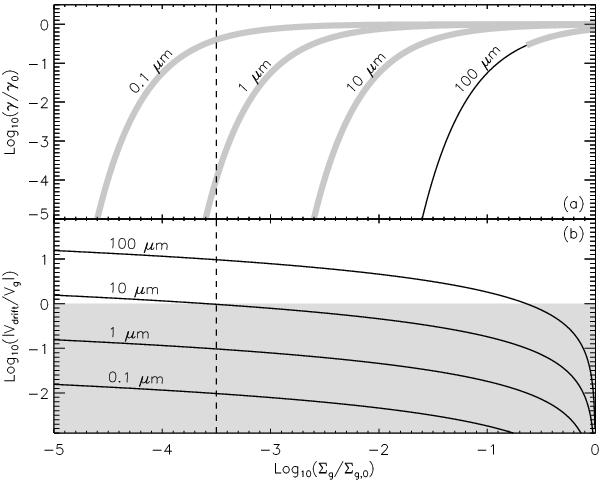Fig. 22

a) Dust depletion factor due to the dust filtration by gap edges as a function of the gap depth for 4 grain sizes of dust, which include 0.1, 1, 10, and 100 μm. The dust depletion factor is calculated assuming that the dust diffusion balances the dust drift. For each grain size, the thick gray line shows the regime where the gas velocity amplification at the gap edge dominates (see panel b)). In this case, the dust depletion factor is only the lower limit at the gap depth. The dashed line marks the gap depth at which the dust particle with size ≥10 μm can be trapped because the dust drift velocity is larger than the gas velocity (see panel b)). b) The ratio of the dust drift velocity to the gas velocity with respect to the gap depth for the dust grains with different sizes. In the calculation, we consider the amplification of gas velocity in the gap and neglect the effect of dust diffusion. The gray-filled region marks, where the ratio is smaller than 1 and dust particles can pass through the gap. The dust grains will be prevented from crossing the gap when the ratio is larger than 1. The dashed line is same as in panel a). The figure is made using the equations in Zhu et al. (2012).
Current usage metrics show cumulative count of Article Views (full-text article views including HTML views, PDF and ePub downloads, according to the available data) and Abstracts Views on Vision4Press platform.
Data correspond to usage on the plateform after 2015. The current usage metrics is available 48-96 hours after online publication and is updated daily on week days.
Initial download of the metrics may take a while.


